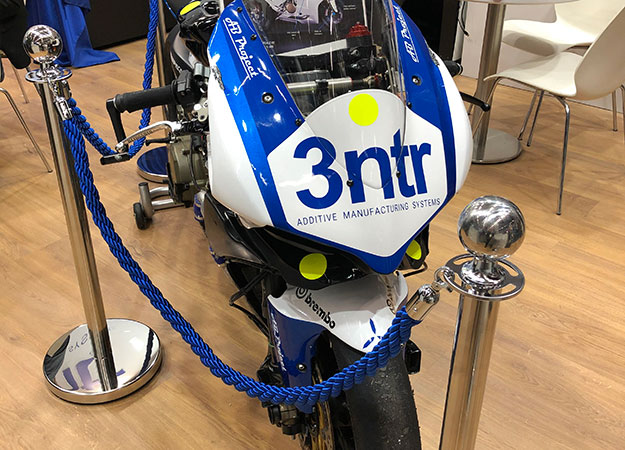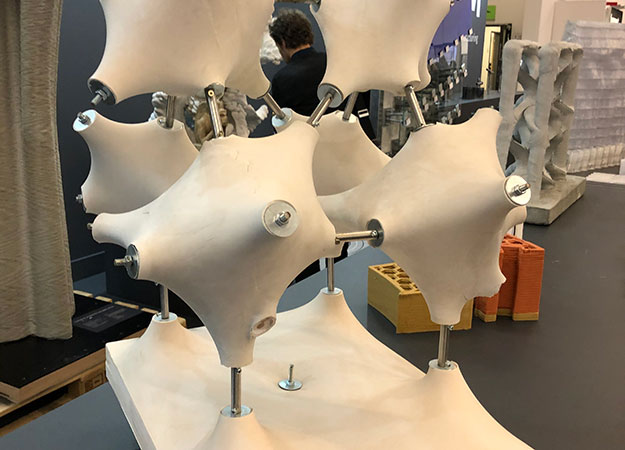Formnext 2019 just ended, and as you know it’s one of the best shows to attend if you work in the 3D printing industry. Since it’s a global show, the event attracts over 34,000 people from around the world. Therefore, it is a great way to get a pulse on the different trends and issues surrounding the industry. Our CEO, Debra Wilcox, was fortunate to attend this year and was blown away by all the new solutions coming to the market.
New and Exciting Technologies

3NTR – A new printer from 3NTR, the Spectral 30, was unveiled at the show. This industrial FFF printer is designed to work with different high-grade polymers such as PEEK, ULTEM, PEI, and PEKK. We’ve been working with 3NTR for a while now and are excited to see how the Spectral 30 performs.

RIZE – This US manufacturer has been on our radar for the past few months. They make industrial composite 3D printers that can print parts in full-color, saving users time on various post-processing techniques. They’re also the world’s first 3D company to receive the UL 2904 GREENGUARD certification for low chemical emissions. We think this certification will be a nice selling point for offices and schools. It’s also a great option for applying images, logos, or even barcodes to 3D printed parts.

DP Polar – We discovered a German company we’ve never heard of before called DP Polar. Their AMpolar i2 printer uses material jetting technology and offers a carousel of 8 pie-shaped sections that deliver a continuous rotating print platform. The print speed of this industrial machine makes it great for production.

Modix – Israeli manufacturer, Modix, also had a booth at Formnext and were showing off their large-scale, heavy-duty 3D printers. These printers require a bit of DIY assembly, but are expandable and extremely affordable. The Modix 120X printer has a print volume of 1200x610x610mm and sells for just $6,000.
The Need for Standards
Industry standards for additive manufacturing are a topic that continues to gain momentum. Various companies gave presentations on why developing standards for both materials and fabrication processes are needed to ensure the quality of 3D printed parts.
Earlier in October this year, America Makes & ANSI announced the Additive Manufacturing Standardization Collaboration (AMSC) online portal. The portal provides detailed information on the different standards that exist, that are in progress, or that are completely non-existent. While AMSC doesn’t write the standards themselves, the tool can be used to facilitate collaboration around standards development.
Writing these standards will require industry-wide collaboration and we’re excited to see what happens. If anything, the urgency around developing these standards is a sign that our industry is growing as more businesses turn to 3D printing as a way to manufacture quality products.
The Rise of 3D Printing Concrete & Steel

The construction industry also received quite a bit of attention at Formnext this year, with various companies introducing large-scale 3D printers for concrete and steel. As you can imagine, these types of printers are extremely big and most use a gantry framework or robotic arm to deposit the material. The symposium BE-AM (Built Environment-Additive Manufacturing) took place at Formnext year and Debra was able to attend a BE-AM presentation discussing the different materials, extrusion patterns and other important considerations for this type of 3D printing at scale. Our company will be making an exciting announcement in the coming weeks about 3D concrete printing so stay tuned!
That’s a Wrap Until Next Year
As expected, attending Formnext proved to be extremely valuable in gaining a first-hand look of where the 3D industry is going. We saw new industry partners and consolidations, growing demand for skilled designers and technologies, and plenty of innovative businesses rolling out new solutions. The show offered an overwhelming amount of support and optimism for the future of our industry and we’re excited to see what’s in store for us in 2020.
If you attended Formnext, what were your thoughts? Which new technologies or materials excite you the most? We’d love to compare our notes with you.



